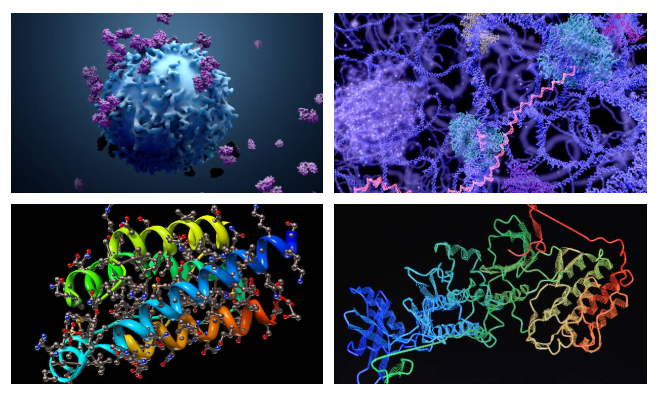Enzymes are proteins in nature that function as biological catalysts. They speed up the reaction and remain unchanged.
Hydrogen peroxide (H2O2) is the substance that decomposes into water (H2O) and oxygen (O2) if it is left at room temperature for a period of time. Therefore, this reaction could take a long time, but speeds up if a catalyst is added as it increases the speed of the reaction. Remember, each catalyst can only catalyze a specific substance.
The catalyst hydrogen peroxide is called “manganese4 oxide.” If it is added, we will get water and oxygen gas in a very short time, and manganese4 oxide could be obtained again in its original form.
How Do Enzymes Work?
Enzymes work the same way as catalysts do. They work with only one substrate and can be used more than once. Similarly, enzymes have a structure that is called the active site in which only one substrate can fit to be digested.
The lock and key hypothesis

You can also assume that enzymes work as a key (substrate) and lock (enzyme). The key should exactly be of the right shape to fit in the lock, and so does the substrate fit into the active site of the enzyme.
Types of Enzymes
They are of two types:
- Builders
- Breakers
Both of them act in the opposite way. Breakers break large molecules into smaller ones, whereas the builders combine smaller ones to make large molecules.
- In the process of photosynthesis, builder enzymes are present in plants as they combine oxygen and water to form carbon dioxide and sugars.
- Breaker enzymes are used in the digestive system to break down the large, insoluble molecules into simple soluble ones to be used by the body. They are also present in cells that respire to break down sugar and oxygen into carbon dioxide, water, and energy.
The Dependency of the Enzyme Names
Naming an enzyme depends on the substrate they work on. For example:
- Sucrase enzyme works on sucrose.
- Maltase enzyme works on maltose.
Enzymes are able to be used again and are only affected by the change in temperature and pH.
The Step-by-step Process of the Extraction
- The microorganisms and the feedstock are added and the liquid is maintained at 26° with a pH of 5–6 (acidic).
- The microorganisms produce 2 types of enzymes, either extra or intracellular.
- By filtering, extracellular enzymes are extracted from the feedstock.
- Despite this, intracellular enzymes are extracted by filtering the microorganisms from the feedstock-crushing them, and wash with water. Then, extract from the solution.
Enzymes and Antibiotics
Antibiotics are powerful medicines that fight bacterial infections and are used for the production of microorganisms.
Some antibiotics, like bactericides, fight bacteria by damaging its white cell walls causing them to burst and die. Other antibiotics interfere with protein synthesis and stop the growth of the bacteria.
They have no effect on human cells (no cell walls) and the structures involved in protein production are different from that of bacteria.
Antibiotics are obtained from sources like:
- Bacteria (Actinobacterium Streptomyces) produce the antibiotic streptomycin.
- Fungi (Penicillium fungus) produce penicillin antibiotics.
Penicillin

Different types of penicillin are produced by different fungi. They are chemicals altered in the lab to make them more effective and enable them to work with different diseases.
Steps of production
- The fermenting tank is filled with a nutrient solution of sugar (lactose) or corn liquor which contains sugar and amino acids.
- Minerals are added
- pH is adjusted around 5 and 6 (acidic)
- Set the temperature to 26°
- The liquid is stirred and the air is blown through it.
- Microorganisms are added and allowed to grow for more than a day in sterile conditions.
- Microorganisms secrete their antibiotics when the nutrient supply is decreased.
- The fluid containing the antibiotic is filtered off and it is extracted.
As seen on:
- https://interact.pk/the-ultimate-guide-to-the-biological-catalysts
- https://www.linkedin.com/pulse/ultimate-guide-biological-catalysts-hamna-qasim/?published=t
- https://issuu.com/home/published/the_ultimate_guide_on_the_biological_catalysts.doc
- https://medium.com/@HamnaQasim/the-ultimate-guide-to-the-biological-catalysts-f0919c836155


You have done perfect work. This site is cool with superb information.